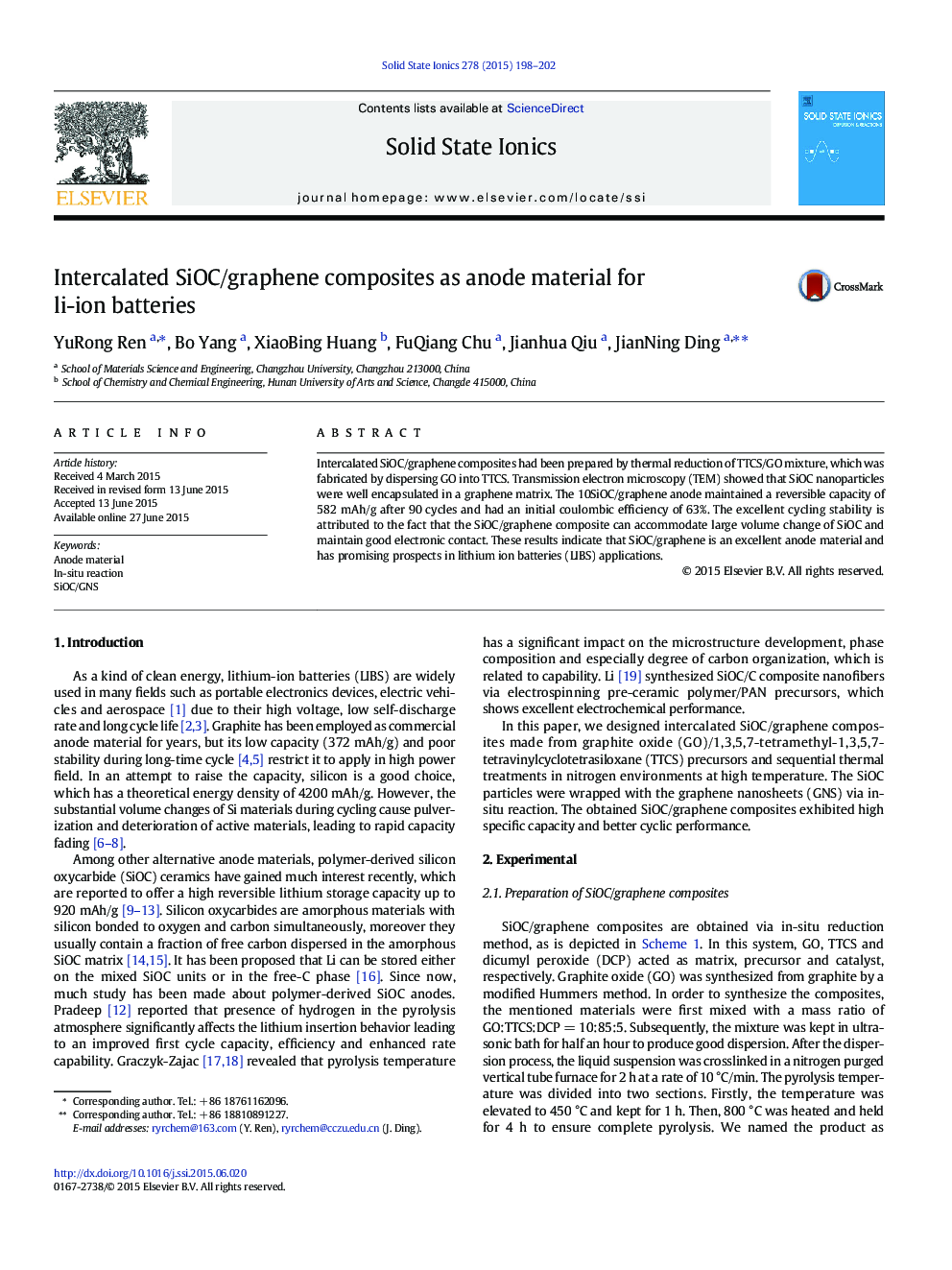| Article ID | Journal | Published Year | Pages | File Type |
|---|---|---|---|---|
| 1295717 | Solid State Ionics | 2015 | 5 Pages |
•An in-situ reaction method is employed to fabricate intercalated SiOC/graphene composites.•The mixture of TTCS and GO is first crosslinking and then pyrolyzed to form the intercalation structure.•It’s one-step preparation of SiOC/graphene composites, which the reduction and pyrolysis are completed simultaneously.•The 10GNS/SiOC composites deliver a stable capacity at the current density of 50 mAh/g for 90 cycles.
Intercalated SiOC/graphene composites had been prepared by thermal reduction of TTCS/GO mixture, which was fabricated by dispersing GO into TTCS. Transmission electron microscopy (TEM) showed that SiOC nanoparticles were well encapsulated in a graphene matrix. The 10SiOC/graphene anode maintained a reversible capacity of 582 mAh/g after 90 cycles and had an initial coulombic efficiency of 63%. The excellent cycling stability is attributed to the fact that the SiOC/graphene composite can accommodate large volume change of SiOC and maintain good electronic contact. These results indicate that SiOC/graphene is an excellent anode material and has promising prospects in lithium ion batteries (LIBS) applications.
